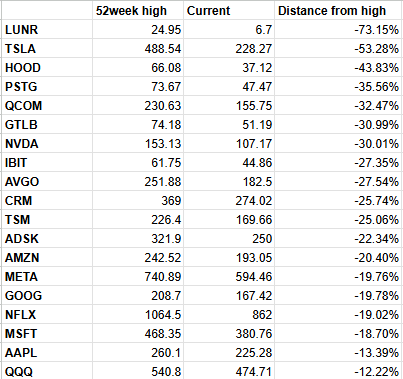Morning and a very risky short-term trade
A few years ago on Kudlow & Co, I took my always very-bearish position on a discussion/debate/argument the investment merits of the airline companies. My point was then and still is that the government welfare/subsidy business model employed by the industry always has been and always will be simply broken. If the business models for airlines were profitable without any government assistance/control, then I’d be all over them. But they’re not. And as the headlines about the carrier I personally use, American Airlines, the most declaring bankruptcy hits this morning, it turns out that once again, business models that would be broken without welfare assistance, are terrible investments. Remind you of a couple other sectors we have been profitably short for similar reasons? Alternative energy is one. And yup, the TBTF banks and their ongoing dependence on welfare are the other. I’ve practically made a career of betting against business models that depend on government largesse to work. Think about it.
As for trading today, if you’re really feeling adventurous, you can take a look at the American Airlines AMR stock that has opened under a quarter today. If you can get it early this morning below 25 cents a share, you can execute this strategy that I’ve cited for you before. I have done a tiny bit of this trade myself here at the open with a cost basis of about 22 cents a share and I’ll exit this trade one way or another by the end of the week according to this strategy from James Altucher, my Jedi master:
James: Typically, when a company declares bankruptcy, the stock is halted by the exchanges so the company has time to disseminate the news of their downfall. Note that it’s NEVER a surprise when a company declares bankruptcy. It’s not like Worldcom was a $50 stock and then they whipped out a Chapter 11 filing while everyone was asleep. By that point Worldcom was the subject of dozens of lawsuits, headlines every day about corruption, all executives being fired, and the debt was trading for pennies on the dollar. The stock itself was around 10 cents on bankruptcy day.
Everyone who was going to bet on this bankruptcy was already short the stock. Not only were they short, but probably almost every executive was short the stock in order to hedge their worthless shares. And everyone who was long the stock as an investment had already most likely sold the stock by this point. Certainly all mutual funds were out of it by this time (they never hold a 10 cent stock).
So what happens, when a stock declares bankruptcy, it’s halted, and then the halt is lifted later that day. Well, nobody is selling (because they all already sold) and everyone is covering their shorts (the worst has already happened and it’s not going to get any worse). So these stocks tend to double or triple in value within 2-3 days, as happened in the case of Worldcom, Enron, FAO Schwartz, and countless other mega-cap bankruptcies.




